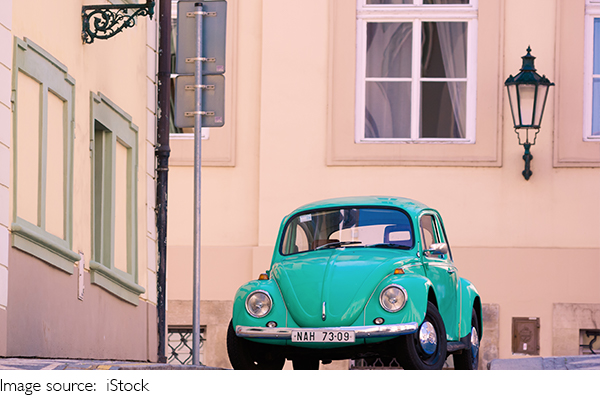Small But Mighty

When it comes to automobiles, bigger isn't always better. In fact, miniature cars have been carving out their niche in the automotive world for decades, offering drivers the perfect blend of compact design, fuel efficiency, and practicality.
These small wonders may not boast the horsepower of a muscle car or the opulence of a luxury sedan, but they excel in areas where larger vehicles often struggle. Let's explore the different types and notable brands of real miniature cars, showcasing why these tiny titans are more relevant than ever.
The Appeal of Miniature Cars
Miniature cars, often referred to as microcars or city cars, are typically small, lightweight vehicles designed primarily for urban environments. Their compact size allows them to maneuver easily through crowded streets and fit into tight parking spaces, making them ideal for city dwellers. Additionally, these cars are often more fuel-efficient, which is a significant advantage in today’s eco-conscious world. With the rising cost of fuel and the increasing focus on reducing carbon footprints, miniature cars are becoming an attractive option for many drivers.
Types of Miniature Cars
Miniature cars come in various shapes and sizes, each tailored to specific needs and preferences. Here are some of the most common types:
1. "Microcars": Microcars are the smallest category of miniature cars, typically seating two people. These cars are designed to be ultra-compact, with an emphasis on fuel efficiency and ease of parking. Examples include the Smart Fortwo and the iconic BMW Isetta. Microcars are perfect for short commutes and city driving, offering a minimalist approach to transportation.
2. "City Cars": Slightly larger than microcars, city cars offer more space and features while still maintaining a compact footprint. These cars often have seating for four and are designed for urban and suburban driving. Popular examples include the Fiat 500 and the Toyota Aygo. City cars strike a balance between practicality and convenience, making them suitable for small families or individuals who need a bit more room.
3. "Kei Cars": Originating in Japan, Kei cars are a unique category of miniature cars that adhere to specific regulations on size and engine displacement. These cars are incredibly popular in Japan due to their affordability, fuel efficiency, and the tax benefits they offer. The Suzuki Alto and Honda N-Box are well-known examples of Kei cars. Though designed primarily for the Japanese market, their influence has spread, inspiring compact car designs worldwide.
4. "Subcompacts": While not as small as microcars, subcompact cars are still considered miniature compared to standard vehicles. These cars offer more power and features, making them versatile for both city and highway driving. The Ford Fiesta and Honda Fit are popular examples of subcompact cars. They offer the best of both worlds: compactness for urban environments and enough power for longer trips.

Leading Brands in the Miniature Car Market
Several automotive brands have made a name for themselves by producing high-quality miniature cars. These brands focus on innovation, design, and efficiency, ensuring their cars meet the demands of modern drivers.
1. "Smart": Smart is one of the most recognizable names in the miniature car market. Known for its ultra-compact Smart Fortwo, the brand has become synonymous with urban mobility. The Fortwo is designed for city living, with its small footprint, tight turning radius, and excellent fuel efficiency. Smart’s dedication to innovation is evident in its electric versions, which cater to eco-conscious drivers.
2. "Fiat": The Italian automaker Fiat has long been a leader in the miniature car segment, with the Fiat 500 being one of its most iconic models. The Fiat 500 combines retro charm with modern technology, making it a favorite among city drivers. Its compact size, stylish design, and efficient performance make it a popular choice for those looking for a small car with personality.
3. "Mini": As the name suggests, Mini is a brand dedicated to producing small cars. The Mini Cooper is perhaps the most famous model, known for its sporty handling and distinctive design. Mini cars are not only compact but also fun to drive, appealing to those who want a bit of excitement in their daily commute. Despite their small size, Minis offer a surprisingly spacious interior and a premium feel, making them a favorite in the miniature car market.
4. "Suzuki": Suzuki is a major player in the Kei car market, with models like the Suzuki Alto and Suzuki Wagon R. These cars are designed to maximize space and efficiency within the strict limits of Japan's Kei car regulations. Suzuki's focus on reliability and affordability has made its Kei cars a hit not only in Japan but also in other markets where small, efficient cars are in demand.
The Future of Miniature Cars
As urbanization continues to rise and environmental concerns grow, the demand for miniature cars is expected to increase. Automakers are likely to continue innovating in this segment, with advancements in electric powertrains, autonomous driving technology, and connectivity features. Miniature cars will not only remain relevant but may become even more integral to the future of transportation.
Miniature cars offer a unique combination of practicality, efficiency, and fun. Whether you're navigating the narrow streets of a bustling city or simply looking for an eco-friendly mode of transportation, there’s a miniature car out there that’s perfect for you. Brands like Smart, Fiat, Mini, and Suzuki are leading the way, proving that good things do indeed come in small packages.

 · Vehicle Team
· Vehicle Team